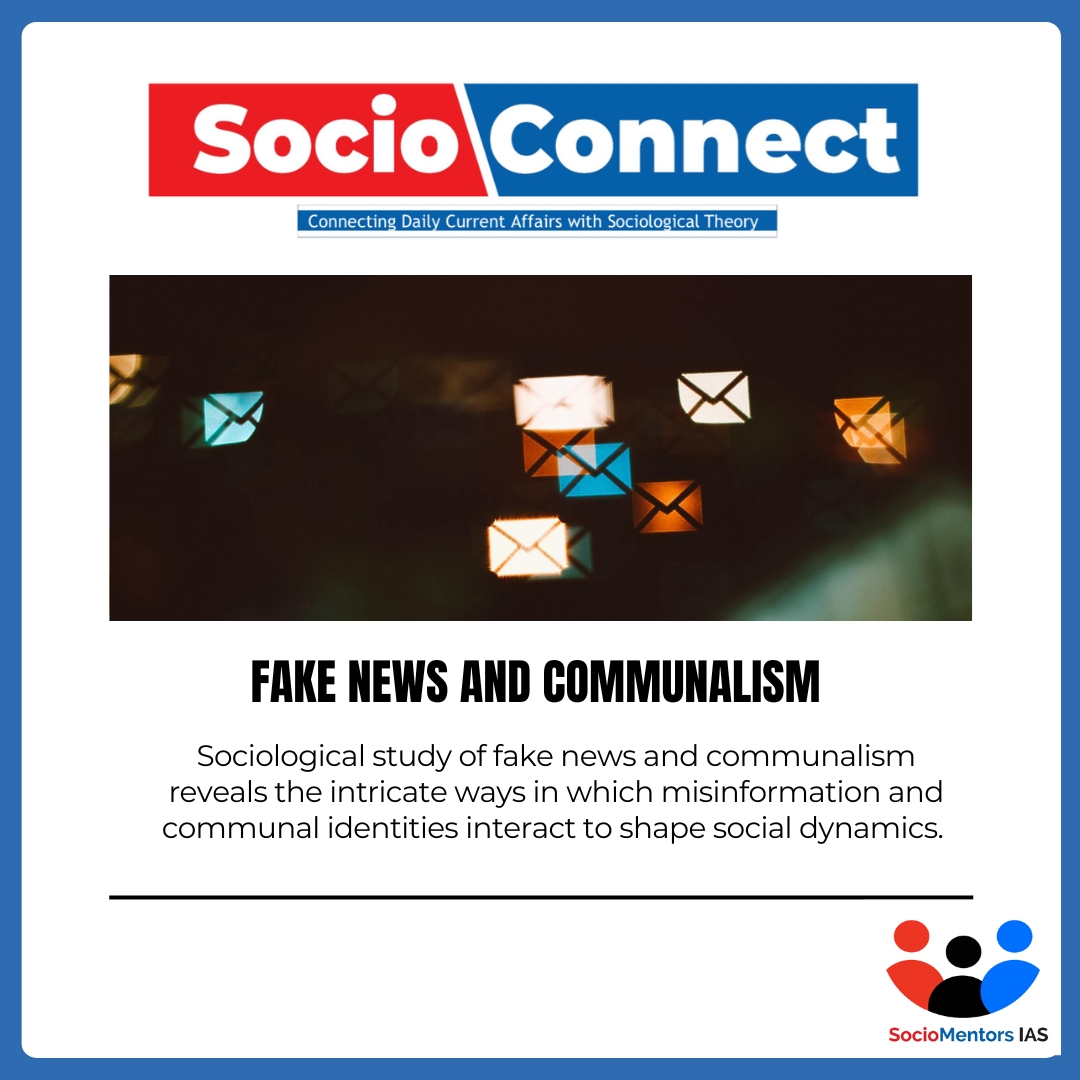Fake News and Communalism – UPSC Sociological Perspective
July 26, 2024
Social media platforms have provided immediate access to and dissemination of opinions, ideas and information. As an entity, social media has developed into a platform for discussions, ideology expressions, information sharing, and emotion. But false news which spreads through these social media, spreads much more quickly than real news, found a recent MIT study led by Sinan Aral, published in the journal Science in early March (2018).
How Fake News Spreads Communalism
- Social Identity Theory: Social identity theory suggests that individuals favour their ingroup over outgroups. Fake news that reinforces a sense of communal identity and aligns with communal narratives are more readily accepted and shared by individuals who already hold communalist views. It tends to simplify complex issues into dichotomous, “us vs. them” narratives. In the context of communalism, this can exacerbate divisions between different religious, ethnic, or cultural groups.
- Fear of Marginalization: Fake news often relies on emotional appeals. Misinformation that evokes fear, anger, or resentment can be particularly potent in fuelling communal tensions by heightening emotional responses within communities. Also, Communities that feel marginalized or perceive external threats may be more susceptible to fake news that reinforces a narrative of victimhood, fostering a sense of unity in the face of perceived dangers.
- Media Manipulation: Media outlets, especially those with specific ideological or communal biases, selectively present or distort information to serve their agenda. This manipulation contributes to the spread of misinformation that aligns with communal narratives. Also, a large share of the users lack digital literacy, which makes them more susceptible to fake news (Raj & Goswami, 2020)
- Lack of Accountability: The anonymity and lack of accountability in online spaces may embolden individuals to spread false information without facing immediate consequences, contributing to the unchecked spread of communal narratives.
- Technological Factors and Reach: Social media has a wider reach: 19% of Dalits, the most underprivileged community in India, have access to water, but 65% of them have access to the Internet (Farooq, 2018). Social media platforms, designed to maximize user engagement, inadvertently amplify fake news through algorithms that triggers strong emotional reactions, contributing to the viral spread of divisive content.
- Crisis and Uncertainty: During times of crisis, uncertainty, or social change, individuals may be more susceptible to misinformation that offers simple explanations or scapegoats, fostering an environment conducive to the spread of communal tensions.
- Politically Motivated Disinformation: In some cases, political actors or parties may strategically use fake news to manipulate public opinion along communal lines for electoral gains or to divert attention from other issues.
Perspectives on Fake News and Its Impact
- Symbolic Interactionism and Socialization: Social Media provides an environment in which individuals can exchange personal, group, or popular interests to build relationships with people that have similar and/or diverging beliefs and values. Individuals interpret information within the context of their social interactions and symbols through this confirmation bias, where people selectively choose information that aligns with their existing beliefs, is a manifestation of symbolic interactionism as individuals construct and reinforce their communal identities through shared narratives.
- Functionalism: Functionalism views society as a system with interrelated parts. During times of crisis or uncertainty, the spread of communal narratives through fake news can be understood as a response to the need for social order and stability, albeit a dysfunctional one that may exacerbate tensions.
- Conflict Theory: From a conflict perspective, the political instrumentalization of fake news is a manifestation of power struggles. Often Social Media platforms are also channels for recruiting interested parties for the continuity and propagation of a long-held ideology. Political actors may use misinformation strategically to gain or maintain power, contributing to social conflict and reinforcing communal divides. Thus, Media is used through fake news to serve the interests of dominant class to perpetuate ideologies which contributes to social inequalities and conflicts.



